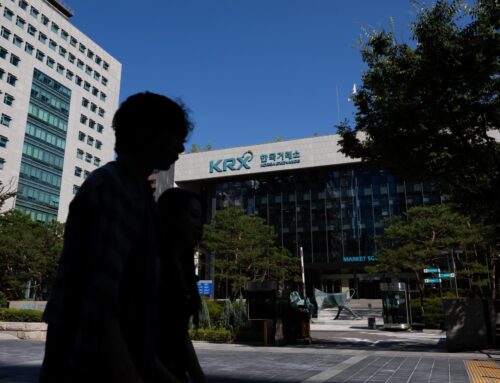The Grid is ASEAN’s Missing Link to a Renewable Future
May 19, 2025
ASEAN’s missing link is an interconnected series of green energy sources, the presence of which will only become more critical as the region becomes a hub for the data centers fueling the AI revolution.
The story of Southeast Asia’s energy future depended upon how fast fossil-dependent countries could find alternate energy sources to ensure energy supply security. Or so we thought until the sharing of energy resources becomes possible with stronger grid interconnections.
As a region abundant in solar and wind potential, ASEAN is gearing towards the transition to the digital era, including the electrification of the transportation sector and growing data center locations. This also means electricity demand will keep on rising.
Without the energy transition, ASEAN risks falling short of its climate goals and missing out on the economics that the renewable energy market could bring.
The IEA and ASEAN Centre for Energy scenarios forecast that solar and wind will account for between twenty-three and twenty-five percent of the power supply by 2030, a significant growth compared to the four percent mix in 2023. To realize this transition, grid infrastructure must evolve and become more modern, flexible and regionally integrated. Based on our research and observation, stronger grids can be achieved through a comprehensive grid plan that includes six pillars: modernization, expansion, adoption of flexibility options, regional integration, market reforms, and the mobilization of finance.
The region’s grid plans need to be more transparent and comprehensive. Between Indonesia, Vietnam, the Philippines and Thailand, just 45,000 km of new transmission lines are planned by 2030. There is yet an ASEAN-wide target in grid infrastructure that encompasses both national and regional targets. ASEAN countries’ national plans have incorporated the six pillars of grid planning. However, there is a lack of transparency and details on how much grid expansion is being planned in some countries.

Chart courtesy of Ember.
A stronger push for action from policymakers could help in securing finance and building investor confidence in grid infrastructure. To date, only Cambodia, Malaysia and Singapore have signed the Global Energy Storage and Grids Pledge, which aims to deploy 1,500 GW of energy storage and twenty-five million kilometers of grid infrastructure globally by 2030.
ASEAN’s greatest untapped resource may be its diversity. Some countries are rich in solar and wind, others in hydro or geothermal. By linking the region’s sunny and windy areas, it can deliver cheap renewable electricity across borders. Countries can share these resources more efficiently, reducing costs, boosting energy security and enabling a more resilient, clean power system.
Along the planned ASEAN grid routes, as much as thirty GW of solar and wind power can be harnessed. This means a larger range of generation capacity will be available to meet future demand.

Chart courtesy of Ember.
With regard to the technicalities, a successful example already exists. The Laos-Thailand-Malaysia-Singapore Power Integration Project (LTMS-PIP) has proven that cross-border trade is feasible. The upcoming BIMP-PIP (Brunei-Indonesia-Malaysia-Philippines) and Sumatra-Java-Singapore links could generate and share even more clean energy. More interconnection projects are underway. There are more challenges that need to be addressed, including technical and institutional barriers in markets with different grid codes, power market structures, and governances.
Lessons from the Southeast African Power Pool (SAPP) show that regional power sector integration can enhance energy security, bring economies of scale to investments, facilitate financing, enable greater renewables penetration, and allow for the sharing of complementary resources.
A modern grid is not just bigger; it must also be smarter and more flexible. The intermittent nature of solar and wind means that grids must become more able to balance supply and demand. Rapid technological development in the energy sector has shown that clean flexibility tools are increasingly available.
Technologies, like pumped hydro and battery energy storage systems (BESS), can help manage variability, while demand-side management (DSM) can flatten peak demand curves. ASEAN countries have already recognized these clean flexibility options: the Philippines has targeted over four GW of pumped hydro, while a battery energy storage system (BESS) is being developed across the region. A dynamic duo combination of solar and battery can emerge as a powerful low-cost solution.
Clean flexibility isn’t a luxury—it’s an essential strategy. In ASEAN’s fossil-heavy grids, flexible technologies can help reduce emissions while maintaining reliability. They also mitigate the risks of overbuilding generation or curtailing output, increasing overall efficiency.
What does a future-ready ASEAN grid look like? Based on our research and observations, six essential pillars are recognized:
- Smart modernization – Deploy digital tools, automation and real-time monitoring strategies to manage renewable flows efficiently.
- Strategic expansion – Build transmission lines to connect renewable-rich zones with demand centers.
- Flexibility and resilience – Integrate storage, demand-side management (DSM), and the fast ramping-up of resources while strengthening against climate and cyber risks.
- Regional integration – Harmonize grid codes and develop cross-border interconnectors.
- Market and regulatory reform – Encourage open access, unbundling and price signals to drive investment.
- Financing mobilization – Leverage public-private partnerships and green finance to attract long-term capital.
Each of these is vital. Together, they define a roadmap not only for grid development but for realizing ASEAN’s clean energy future.
With a growing number of companies vowing to reduce their greenhouse gas emissions to zero, ASEAN can seize the opportunity to become the green hub for these multinationals.
Data centers, for instance, are exploring clean energy options. As one of the hotspots for locating data centers, Singapore is investing in clean electricity imports from neighboring countries to support a growing demand for renewable energy.
These imports are made possible by grid interconnection.
Therefore, ASEAN’s energy transition hinges not just on ambition, but on infrastructure. Grid development is the connective tissue that will allow clean power to scale, flow, and deliver on its promise.
The region should treat the grid as the foundation of a modern, prosperous and decarbonized energy system. A stronger, modern, flexible and interconnected grid presents an opportunity for ASEAN to leverage clean energy projects that can drive significant economic growth.
Dinita Setyawatianalyses electricity policy across Southeast Asia and promotes the use of clean power in electricity, transportation and industrial sectors.
She holds a PhD in Global Environmental Study from Kyoto University of Japan, and a Master’s in Southeast Asian Studies from SOAS, University of London.
Shabrina Nadhilasupports Ember’s data-led research and advocacy for electricity policy that enables the transition away from fossil fuels to clean electricity in the Southeast Asia region. She holds an MSc in Economics and Policy of Energy and the Environment with Distinction from University College London.
About the Authors: Dinita Setyawati and Shabrina Nadhila
Dinita Setyawati analyses electricity policy across Southeast Asia and promotes the use of clean power in electricity, transportation and industrial sectors. She holds a PhD in Global Environmental Study from Kyoto University of Japan, and a Master’s in Southeast Asian Studies from SOAS, University of London.
Shabrina Nadhila supports Ember’s data-led research and advocacy for electricity policy that enables the transition away from fossil fuels to clean electricity in the Southeast Asia region. She holds an MSc in Economics and Policy of Energy and the Environment with Distinction from University College London.
Image: Shutterstock/BUTENKOV ALEKSEI
Search
RECENT PRESS RELEASES
Related Post



